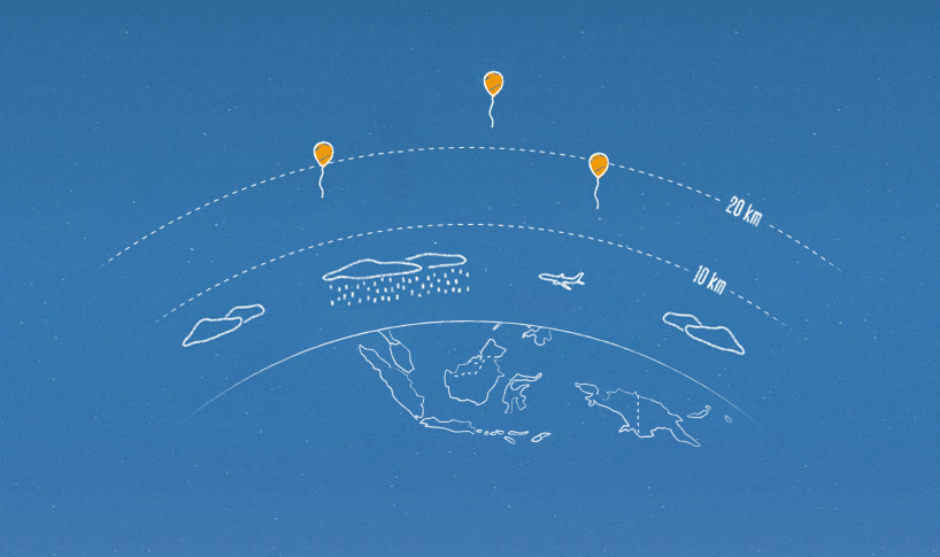
Google will launch hundreds of helium filled balloons into the stratosphere next year over Indonesia to deliver internet connectivity to the most remote corners
Google has announced that it will begin testing its Project Loon balloons over Indonesia next year to provide internet access across the country’s 17,000 plus islands. Google has tied up with three Indonesian mobile service providers to provide LTE connectivity.
According to estimates, only about a third of Indonesia’s population has access to the Internet. Being an archipelago, mobile networks are the only viable option of delivering internet connectivity to remote places. Google intends to augment the existing telecom infrastructure by employing its internet beaming giant helium balloons. “Loon can help telecommunications companies extend their networks; high in the sky, we can help overcome the difficulties of spreading equipment across an archipelago of 17,000 islands of jungles and mountains, providing connectivity to even the most remote islands,” said Project Lead, Mike Cassidy in a blog post. Google has tied up with three mobile operators, Indosat, Telkomsel, and XL Axiata to beam high-speed internet to the most far-flung corners of the country.
Google is expected to test the technology in Indonesia for a full year before commencing commercial operations. The helium balloons will be flying in the stratosphere, 20km above the surface of the earth. They will act as floating mobile towers, with each balloon covering a ground area of roughly 40km diameter. When one balloon drifts away from its position, another floats in to take its place. Google hopes to create one continuous ring of balloons around the world, in the southern hemisphere by next year. It will be able to provide uninterrupted internet access to some regions, where the company intends to start commercial operations.
Project Loon started life at the secretive Google X lab at Mountain View. It was tested for the first time in 2013 in New Zealand with just 30 balloons. It has since expanded over a wider geographical area. There has also been an improvement in the longevity of each balloon, as well as improved data transmission speeds. Besides, Project Loon, Google is also experimenting with solar-powered drones to deliver internet connectivity. Codenamed Titan, the drones are expected to complement Project Loon. Interestingly, Facebook is also trying something similar with the Aquila drones.




